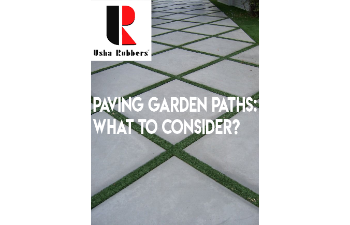
Blog

What to Consider when Paving Garden Paths

What to Consider when Paving Garden Paths
If you're planning to design garden paths or already set them out, then we've created a series of useful tips for correctly arranging them. We suggest these tips to you to avoid making mistakes in preparing the tracks and to save yourself from disappointing results. Follow Usha Rubbers & Plastics for amazing results as follows.
1. Choose the best Color Combination
Keep in mind that the wrong combination of paving colors with a property’s façade could reduce the attraction of even the most elegant structure. Use colors to suit the structure’s façade and vice versa, function as opposed. Avoid bright saturated colors for tracks to avoid excessive variegation and catchiness. Usha Rubbers & Plastics offers you the ideal color and mixing rations for your best paver results. Contact Usha Rubbers for your ideal mixing ratios today.
2. Choosing the right geometry
Lay winding or straight paths. The choice of track geometry primarily depends on the overall style of your garden: Straight paths are preferable when paving a garden in a regular style with its order and symmetry meandering paths, on the contrary, are natural for a freer landscape style. Whatever is the shape of yhe paving are, keep in mind that functionality, utility and aesthetics are always given importance. Without these factors, it is impossible to have a good garden pathway. Pathways designed with the help of Usha Rubbers & Plastics Moulds always have the feature of precision engineering. Our userfriendly design language and production line ensures the most efficient and accurate design for your concrete paving needs.
3. Finalise on Width of the Track
The width of the tracks is selected, primarily, based on functionality. As a rule, it is believed that the width of the path for one person is 60-80 cm, respectively, so that two people can stretch out - about 120 cm. The most wide should be the often used paths, for example leading to the main entrance of the house. Household and secondary paths can be made already, about 50-60 cm. Start installing borders only after you decide on the shape of the tile to avoid cropping it.
4. Do not use these for paving
Do not use ceramic tiles for arranging tracks. Such material does not have the proper frost resistance and is intended for internal use. In addition, it is slippery and fragile. Also, natural layered and porous materials of sedimentary rocks and organic bottom sediments are not suitable for paving, they have low strength, delaminate very quickly and become unusable.
For the best concrete paving solutions and the best quality Plastic Moulds for Concrete pavers and Rubber moulds for Concrete Paving blocks, contact Usha Rubbers.

